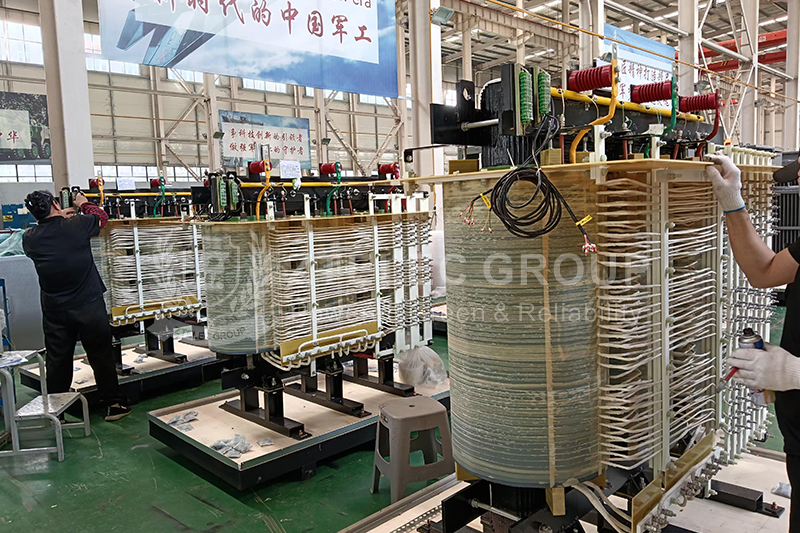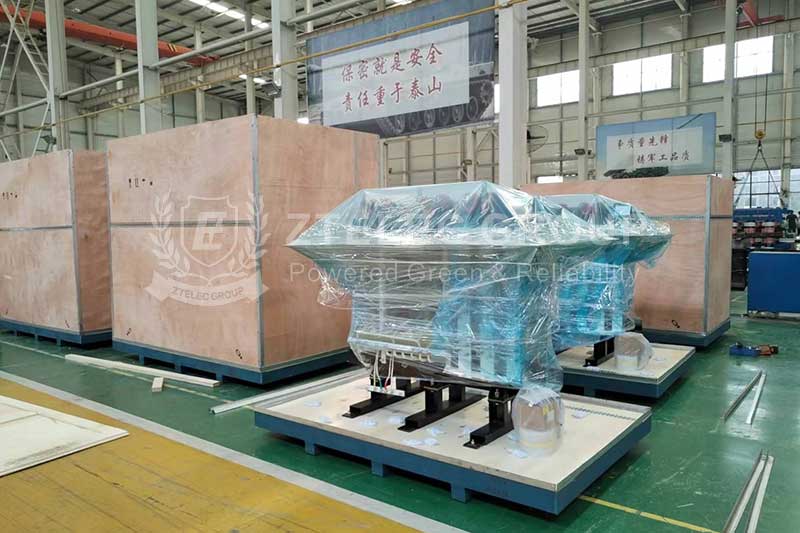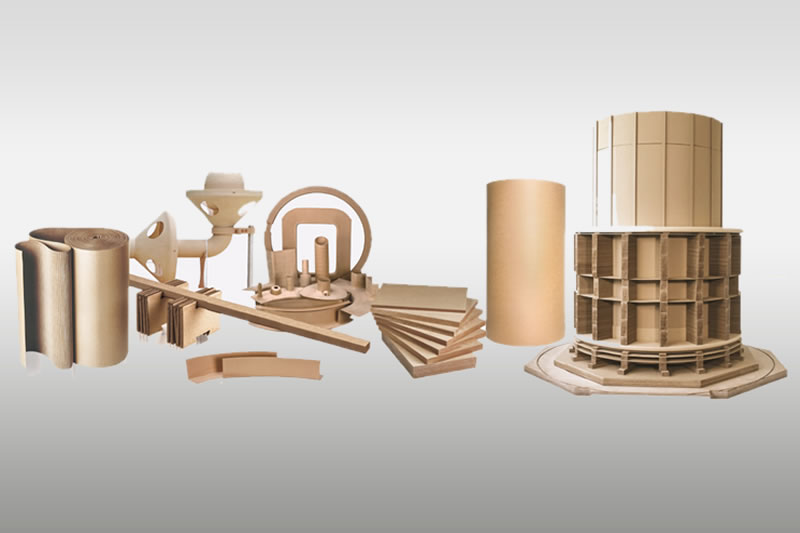Cooling Methods and Advantages of Dry-Type Transformers
Dry-type transformers are efficient devices commonly utilized in power systems, gaining popularity due to their safety, environmental friendliness, and operational stability. The implementation of appropriate cooling methods during the operation of dry-type transformers not only ensures their normal functioning but also significantly extends their service life.
What is a Dry-Type Transformer?
A dry-type transformer, as the name implies, operates without any liquid medium. In contrast to oil-immersed transformers, dry-type transformers utilize air as a cooling medium, which results in a relatively simple structure and facilitates ease of operation and maintenance. They are commonly employed in residential areas, commercial buildings, and industrial equipment due to their superior environmental performance, reduced fire risk, and high energy efficiency.
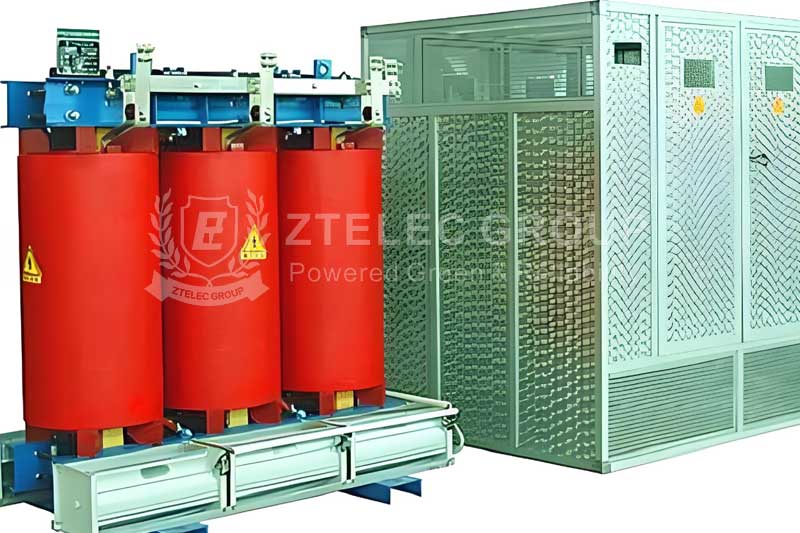
Cooling Methods for Dry-Type Transformers
The primary cooling methods for dry-type transformers include the following:
1. Natural Cooling
Natural cooling is the most fundamental cooling method for dry-type transformers. In this approach, the heat generated by the transformer windings and core during operation is dissipated into the air through natural convection. While this method features a straightforward design, its cooling efficiency is influenced by factors such as ambient temperature and airflow speed, rendering it suitable primarily for low-power transformers.
2. Forced Air Cooling
Forced air cooling enhances the cooling efficiency of transformers by increasing airflow through the use of external fans or air conditioning units. This method effectively reduces the risk of damage caused by overheating, thereby improving the transformer's load capacity. Additionally, forced air cooling systems can automatically adjust fan operation in response to load variations, ensuring optimal heat dissipation under various operating conditions.
3. Water Cooling
Although water cooling is not typically employed in dry-type transformers, it can be an effective cooling method in specific situations, such as with ultra-high-power dry-type transformers. This method efficiently dissipates generated heat, ensuring the stability of the transformer under high-load conditions.
4. Heat Exchanger Cooling
By incorporating the design of heat exchangers, this method effectively utilizes the principles of heat exchange to transfer the internal heat of the transformer to the external environment. This approach significantly enhances the cooling capacity of dry-type transformers and is well-suited for high-power, continuous operation applications.
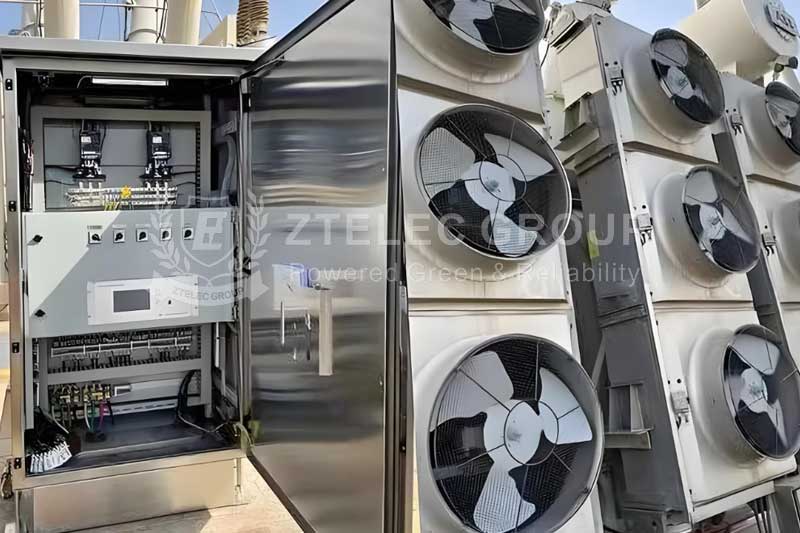
Advantages of Cooling Methods for Dry-Type Transformers
The cooling systems for dry-type transformers offer substantial advantages in both design and practical application.
1. High Safety Standards
As dry-type transformers utilize air as a cooling medium, they mitigate the fire hazards associated with oil leakage or combustion that can occur with oil-immersed transformers. Furthermore, dry-type transformers do not necessitate the storage of large quantities of flammable liquids, which further enhances the overall safety of the equipment.
2. Strong Environmental Friendliness
The cooling methods used in dry-type transformers do not pollute the surrounding environment, making them especially important in urban and densely populated areas. They do not release harmful substances during operation, which aligns with contemporary global ideals of sustainable development.
3. Easy Maintenance
Dry-type transformers that utilize air for cooling simplify maintenance requirements. In the absence of a liquid medium, operators only need to focus on cleaning external dust and periodically checking the device's operational status, which significantly reduces labor and time costs.
4. Exceptional Reliability
With advancements in modern manufacturing processes, the design of cooling systems for dry-type transformers has become increasingly rigorous, ensuring stable operation under various environmental conditions. The combination of natural cooling and forced air cooling enables transformers to adapt to different load requirements, thereby enhancing the reliability of the equipment.
5. High Energy Efficiency
Implementing efficient cooling methods not only reduces energy consumption and operating costs but also significantly enhances the overall energy efficiency of dry-type transformers. In light of the global focus on energy conservation and emission reduction, the benefits of these methods are becoming increasingly evident.
The cooling methods used in dry-type transformers, along with their numerous advantages, provide essential guarantees for the safe and efficient operation of power equipment. By designing effective cooling systems, dry-type transformers can ensure the normal functioning of equipment while enhancing the reliability and stability of the overall power system. Therefore, in the future application of power facilities and related industries, dry-type transformers will undoubtedly play an increasingly important role. With ongoing technological advancements, cooling technologies for dry-type transformers will also experience broader application and development across various fields.
- more+releated article
- 2026-01-04Common Power Transformer Faults: Causes, Solut
- 2025-12-312026 New Year Holiday Notice
- 2025-12-31Operation, Maintenance, and Service Life Manag
- 2025-12-30How to Select a 100 kVA–500 kVA Distribution
- 2025-12-29The Impact of NHN NMN Composite Insulation on
- 2025-12-26Practical Application of GPO-3 Insulation Boar
- 2025-12-2510kV Transformer Replacement Timeline: Install
- 2025-12-25Low Smoke EN45545 GPO3 UPGM203 Laminated Board
- 2025-12-24Merry Christmas — ZTelecgroup Christmas Cele
- 2025-12-24How to Select a Suitable 50kVA–500kVA Distri

